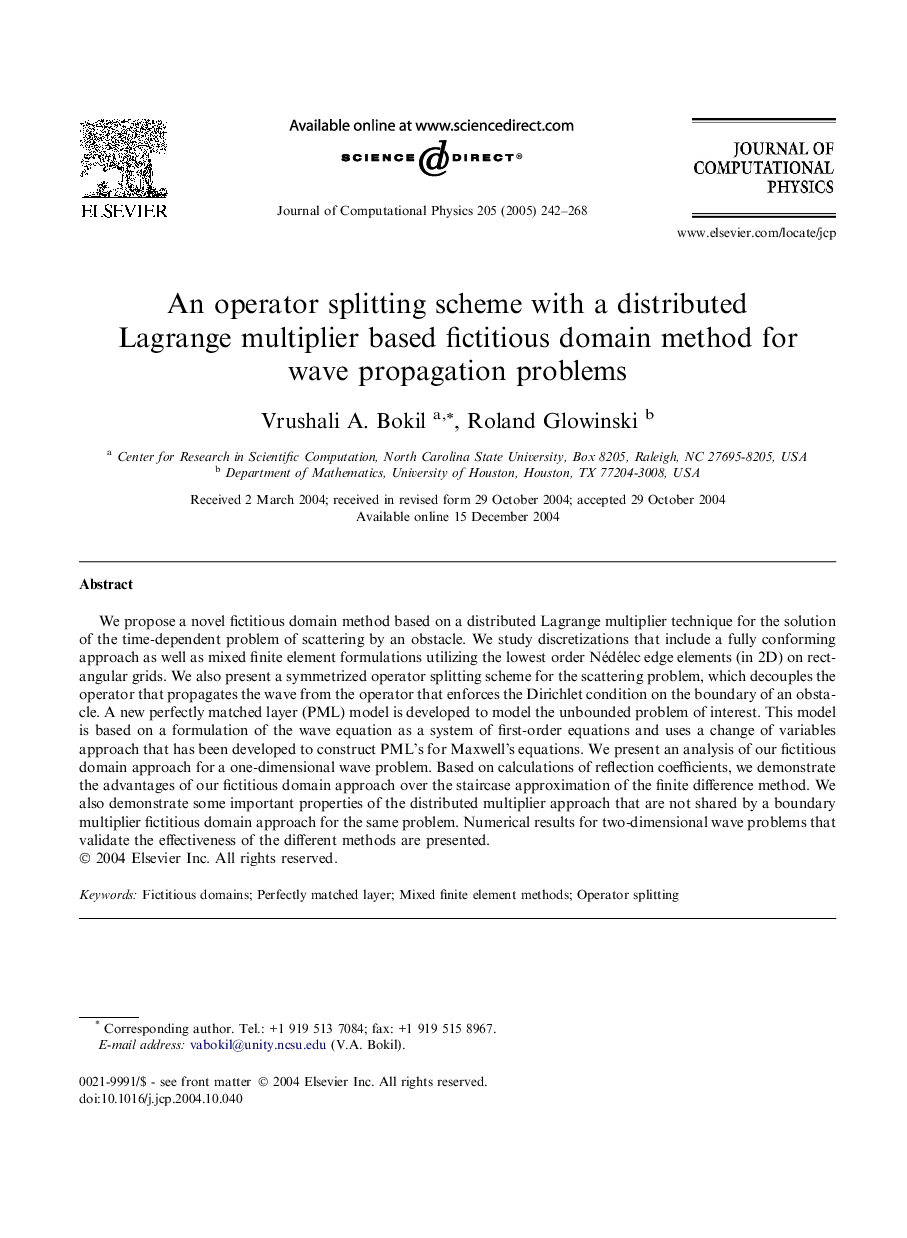| Article ID | Journal | Published Year | Pages | File Type |
|---|---|---|---|---|
| 10357339 | Journal of Computational Physics | 2005 | 27 Pages |
Abstract
We propose a novel fictitious domain method based on a distributed Lagrange multiplier technique for the solution of the time-dependent problem of scattering by an obstacle. We study discretizations that include a fully conforming approach as well as mixed finite element formulations utilizing the lowest order Nédélec edge elements (in 2D) on rectangular grids. We also present a symmetrized operator splitting scheme for the scattering problem, which decouples the operator that propagates the wave from the operator that enforces the Dirichlet condition on the boundary of an obstacle. A new perfectly matched layer (PML) model is developed to model the unbounded problem of interest. This model is based on a formulation of the wave equation as a system of first-order equations and uses a change of variables approach that has been developed to construct PML's for Maxwell's equations. We present an analysis of our fictitious domain approach for a one-dimensional wave problem. Based on calculations of reflection coefficients, we demonstrate the advantages of our fictitious domain approach over the staircase approximation of the finite difference method. We also demonstrate some important properties of the distributed multiplier approach that are not shared by a boundary multiplier fictitious domain approach for the same problem. Numerical results for two-dimensional wave problems that validate the effectiveness of the different methods are presented.
Related Topics
Physical Sciences and Engineering
Computer Science
Computer Science Applications
Authors
Vrushali A. Bokil, Roland Glowinski,
